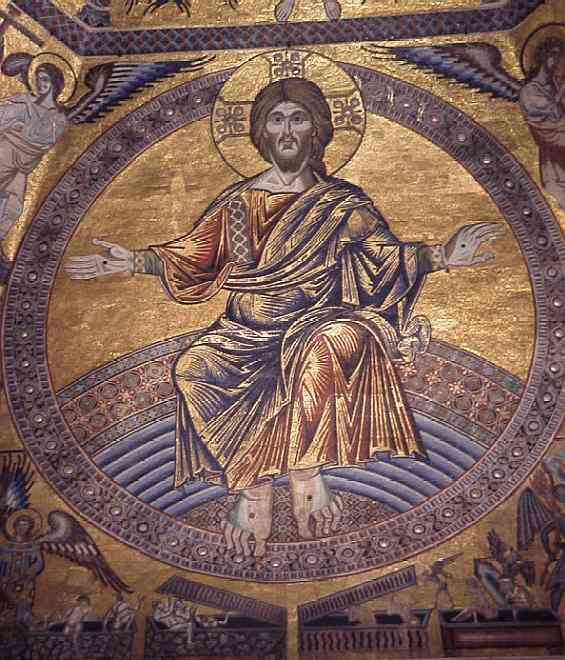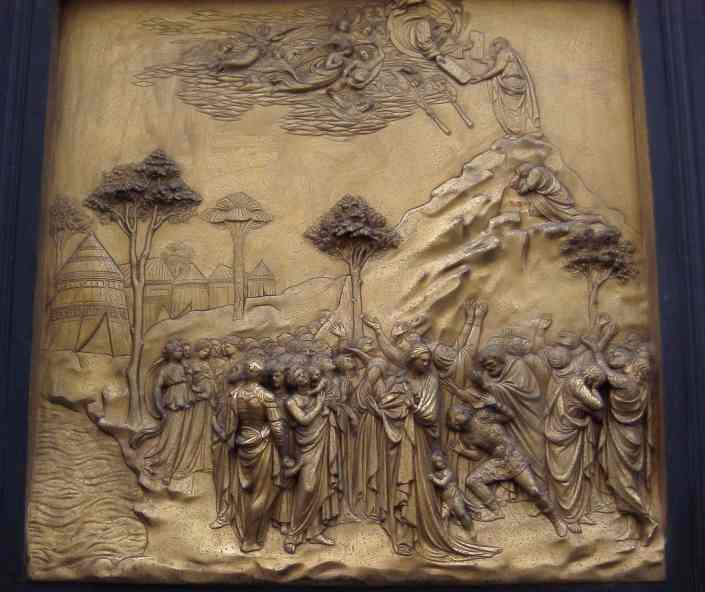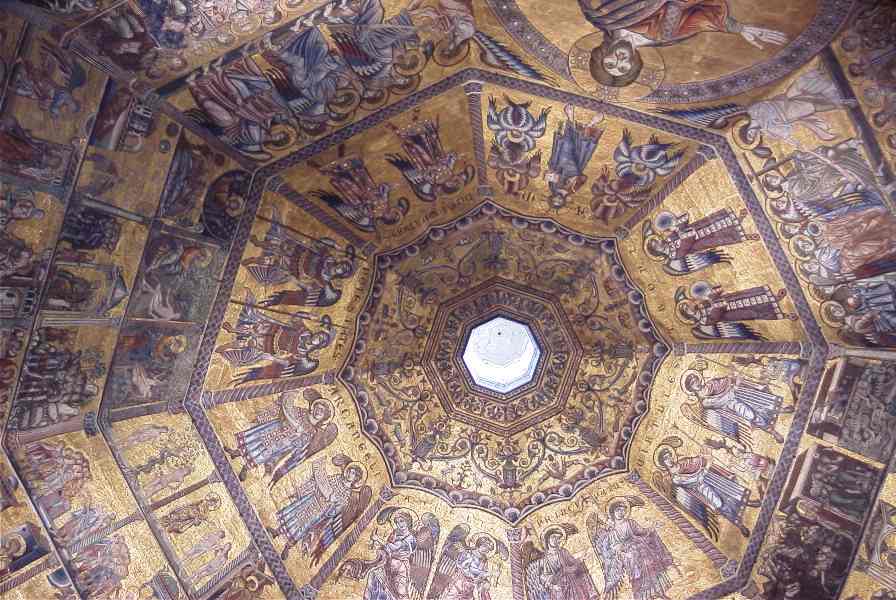

Florence's Romanesque Octagonal Baptistery was where the Renaissance began in 1401 with the competition for building a second set of doors to match the Gothic set sculptured for the south side 65 years earlier. The rules required the sculptor to match the earlier Gothic frames. Lorenzo Ghiberti won the comission hands down against staggering competition that includes the who's who of the sculptor world including Donatello. Ghiberti left behind a building that combines the three great religious architectures: Romanesque, Gothic, and early Renaissance. Long before Ghiberti, this was a holy place -- one of the few mentioned by Dante.
For 21 years he built these "gothic" north doors with elements that went on to define Renaissance sculpture (and included a self portrait as well.) When finished, the guilds were so impressed that they asked Ghiberti to create the final set for the East side -- no competition, no restrictions. Just before his death 28 years later, Ghiberti finished the ten Old Testament scenes seen below -- each a Renaissance sculptural masterpiece. Michelangelo dubbed these east doors the Gate of Paradise. Today on the baptistery we look at copies. The originals have been restored and kept inside the Cathedral Museum (which was closed for repairs like a lot of Florence museums in November). In general, most of the great statuary in Florence has been moved inside.

Here's a close-up of one of the ten panels showing Moses receiving the ten commandments while his people despair below:

Moving inside, one sees another beautiful mosaic ceiling in this 11th century building and is immediately reminded of the baptistery's octagon shape:

We have here yet another Last Judgement. The picture at the top of this page is a close-up of Jesus which reminded us of the Byzantine Mosaic ceilings in the Norman cathedrals of Sicily built about the same time.
The Baptistery has a lot of other interesting "borrowings" from other religious spaces including Roman temples. (Probably this octagon replaced a series of buildings on the site including an ancient Roman palace). To the upper right of the entrance door is the tomb of the first John XXIII done by the great sculptor Donatello (he found a way to get his work into the Baptistery even if it wasn't by the front door). This John was discredited allowing his name and number to be reused by the 20th century's most loved pope.
Our next stop was the Piazza della Signoria -- the secular antithesis to this religious square. Please join us by clicking here.
Where do you want to go today? Here's a few choices:
